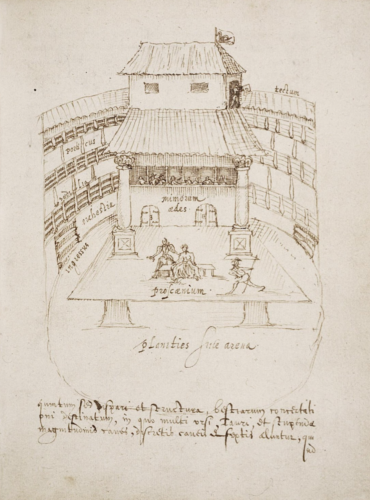This is a section from Visscher’s famous illustration of London in the early seventeenth century, showing the view from the South Bank. Two playhouses are visible in the foreground, The Swan (far left) and The Globe (central). In between them is ‘The Bear Garden’: originally a bear-baiting arena, it was rebuilt as The Hope playhouse by Philip Henslowe in 1613-14; from then on, it hosted plays and bear-baitings on alternate days. Public, outdoor playhouses, like bear pits and brothels, were viewed with suspicion and subject to strict controls within the City of London; so they clustered on the South Bank or further to the north, outside the City authority’s control. The geographical proximity of such activities invited shared knowledges: when Gloucester in King Lear says ‘I am tied to th’ stake, and I must stand the course’ (3.7.67), the force of the analogy comes from the spatial and imaginative immediacy of bear-baiting to the early modern playhouse.
Click on The Swan for more information












